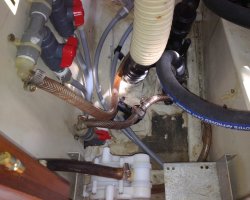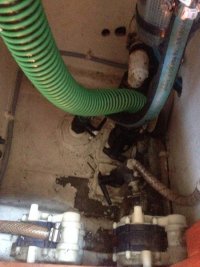RedHerring
Member II
I have a saltwater pump going into the galley sink in my E35. In a brilliant display of unfathomable wisdom, my predecessor attached the intake of this pump to the same thru-hull that serves as a drain of the aforementioned sink. The refrigerator pump intake is there, too.
Questions:
1. Am I missing something, or is this basically designed to circulate dirty water through the sink?
2. Where is a good place to add an intake thru-hull in an E-35?
Questions:
1. Am I missing something, or is this basically designed to circulate dirty water through the sink?
2. Where is a good place to add an intake thru-hull in an E-35?


